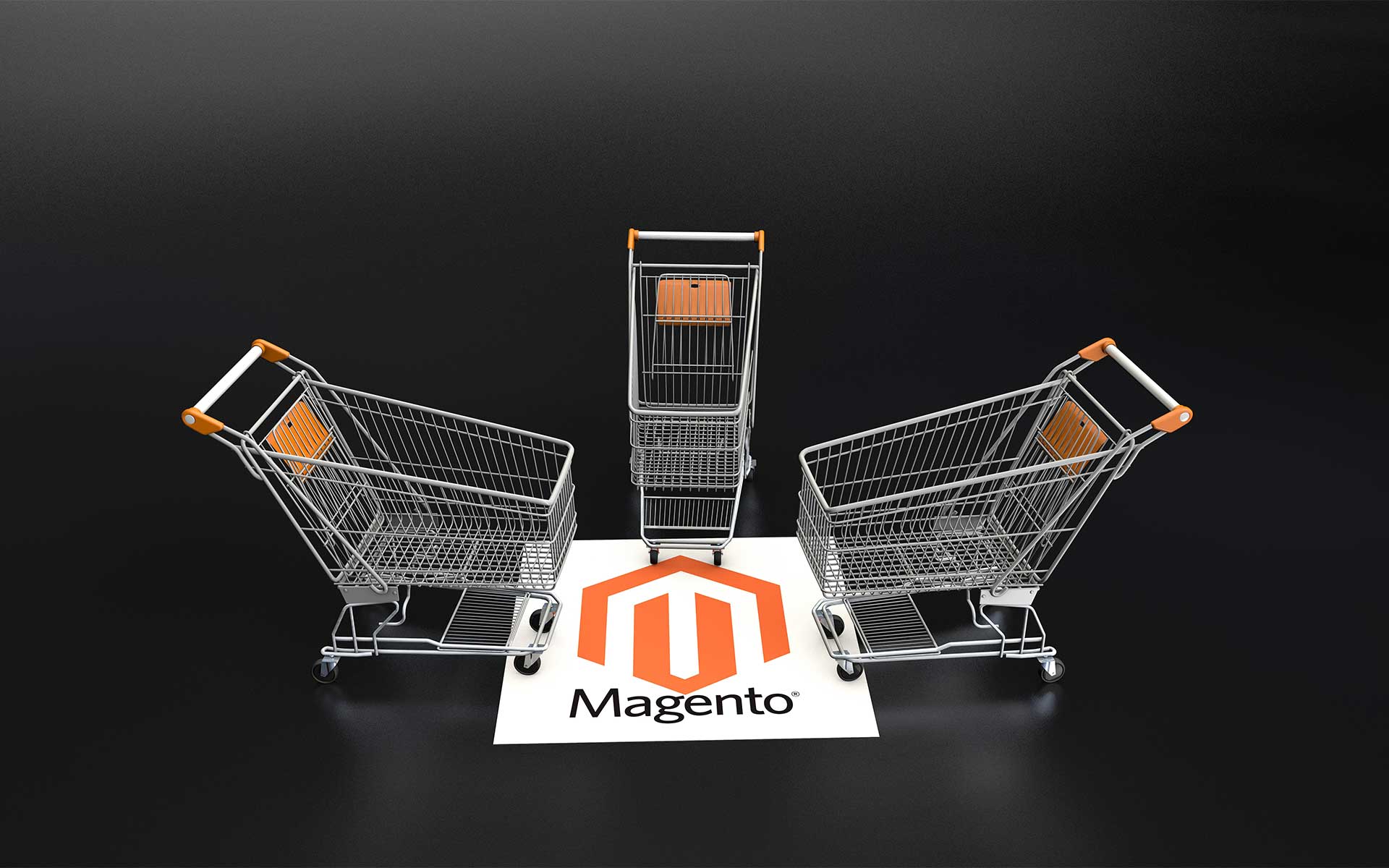
Navigating the dynamic world of eCommerce can feel like trying to keep up with a high-speed train, right? We understand that challenge, tackling it head-on to evolve our online store to meet and exceed modern consumer expectations.
Here’s an eye-opening stat: nearly half of all web traffic now comes from mobile devices. Through our in-depth exploration of Magento Headless technology, we’ve learned it’s not just industry jargon—it’s a definitive advantage for proactive businesses aiming to excel online.
Get ready for some real talk on how this innovative strategy can energize your eCommerce presence and take your platform to the next level—let’s dive in together!
Key Takeaways
- Magento headless commerce separates the front-end design from the back-end data management, allowing for flexibility and customization across various digital platforms.
- Implementing Progressive Web Apps (PWAs) in a headless Magento setup can significantly improve site speed, user engagement, and mobile SEO performance.
- Businesses using Magento headless need to invest in skilled developers experienced with JavaScript frameworks like React.js or Vue.js for seamless integration and ongoing maintenance.
- The initial cost of transitioning to a headless architecture is substantial but provides long-term benefits such as scalability, improved customer experiences, and potential for increased revenue.
- Real – world success stories like those of Rubik’s Cube and Zadig & Voltaire demonstrate the impact of adopting headless technology on performance improvements and sales growth.
Understanding Magento Headless
We see Magento headless as a game-changer for ecommerce businesses, setting a new bar for flexibility and innovation in online shopping. At its core, headless commerce splits the front end of your website – what customers see – from the back end where all your products, orders, and data live.
This means you can update the look or add new features to your site without touching the complex systems that run it.
With headless Magento, we tailor customer experiences across all devices—smartphones, tablets or desktops. Your team gets to use technologies best suited for each platform. For example, progressive web apps (PWAs) make mobile sites feel like native apps with fast load times and offline capabilities while Vue Storefront creates modern front ends that enhance SEO and boost sales.
Headless is more than just tech; it’s about giving us the tools to craft engaging digital touchpoints that resonate with our audience wherever they are.
How Is Magento Headless Different Than a Traditional Magento Store?
Magento headless architecture takes a different approach by separating the frontend presentation layer from the backend logic. This means that while a traditional Magento store intertwines how data is managed and presented, headless Magento stores rely on APIs to connect the front-end user experience with back-end processes.
Stores can use various technologies like React or Vue.js for their user interfaces, making them faster and more flexible.
This separation allows businesses to tailor unique customer experiences across multiple channels such as web, mobile apps, or social media platforms. Merchants gain freedom to innovate without being constrained by backend limitations.
They can push updates to the frontend swiftly and test new features in real-time without disrupting backend systems. Unlike traditional setups where changes often require complex development cycles, headless implementation streamlines these efforts significantly.
Advantages of Magento Headless
Embracing Magento headless architecture unlocks a suite of benefits, from elevating user experiences to achieving unparalleled flexibility across various digital touchpoints, propelling your ecommerce platform ahead in today’s competitive marketplace.
Enhanced Customer Experience
We understand the struggle to keep customers engaged and satisfied in today’s competitive online marketplace. Headless Magento is reshaping this landscape by offering tailor-made shopping experiences across various digital platforms.
Customers now enjoy seamless interactions, whether they’re on a mobile app or a responsive website. This flexibility means businesses can update and optimize their frontend presentation without disrupting backend processes, creating an uninterrupted and dynamic user journey.
Our experience shows that adopting progressive web apps (PWAs) alongside headless commerce transforms the game for our clients’ e-commerce platforms. The responsiveness and app-like feel of PWAs captivate users, increasing time spent on site as well as conversion rates.
With a headless CMS integrated into Magento, we enable updates in real-time across all touchpoints, ensuring content is fresh and relevant. This approach not only builds brand loyalty but also paves the way for an omnichannel experience that consumers demand today.
Omnichannel Solution
Our journey into headless Magento opens up a world of omnichannel solutions. Picture your ecommerce store reaching customers seamlessly across multiple platforms – from mobile apps to social media and beyond.
With headless architecture, the front-end experience is crafted for each channel while maintaining a consistent brand message and inventory updates in real-time. This approach elevates customer experiences as they switch between devices or platforms without missing a beat.
Harnessing this flexibility, we empower our businesses to meet shoppers where they are, be it an iOS app during their morning commute or through targeted online marketing on their favorite social networking service after dinner.
Omnichannel isn’t just about being everywhere; it’s about creating meaningful connections with our audience at every touchpoint.
Better Subscription Management
We understand the importance of maintaining a streamlined subscription service for your online business. With the flexibility offered by headless Magento, integrating powerful tools like Chargebee becomes seamless.
You can elevate your customers’ experience by offering them hassle-free recurring payments and smart tax management. These features not only enhance subscriber satisfaction but also free up your time to focus on growing your enterprise.
Managing subscriptions effectively is key for any online retailer looking to offer a subscription-based business model. Tools integrated into headless eCommerce platforms enable features such as pricing experimentation without compromising on other functionalities of traditional digital marketing or product information management systems.
This means you’re equipped to adapt quickly to market changes while ensuring that your online store remains user-friendly and responsive across all channels and devices.
SEO Optimization
Optimizing for search engines is critical in leading customers to our Magento headless online stores. By focusing on faster site speeds and seamless customer experiences, we directly improve our store’s visibility and ranking on Google.
With the agility of a headless system, adjustments that bolster SEO—like enhancing meta tags and optimizing web pages for mobile users—are executed more swiftly.
Leveraging progressive web apps (PWAs), we tap into improved mobile SEO performance, crucial since most users shop on their phones. This investment translates into quicker load times and a fluid shopping experience, both heavily weighted by search engines when determining rankings.
We don’t stop there; integrating with robust third-party software components further refines our SEO efforts, ensuring that every product page computes as an open invitation for browsers-turned-buyers.
Employing thoughtful strategies like content delivery networks (CDNs) help our web pages load rapidly around the globe while maintaining high uptime. These technical solutions position us advantageously in competitive markets where milliseconds matter.
Embracing these practices means not just following trends but setting benchmarks in how responsive eCommerce websites should perform—an absolute must in today’s fast-changing retail landscape.
Improved Scalability
We understand how crucial it is for your online business to grow without hitting technical roadblocks. Headless Magento shines in this area by offering the ability to handle increased traffic and sales volume effortlessly.
It separates frontend presentation from backend functionality, which means you can scale up one part of your system without overhauling the entire platform. This modular approach allows for flexibility as your customer base expands and your product catalog grows.
Our experience shows that integrating a headless CMS with Magento not only boosts performance but also streamlines content management across multiple channels. This leads to an ecommerce solution that meets evolving market demands while keeping loading times swift and managing subscriptions effectively.
Let’s harness the power of improved scalability with headless Magento, crafting a web store poised for growth and ready to embrace future technology trends seamlessly.
Disadvantages of Magento Headless
While Magento Headless can turbocharge your online business with its flexibility and scalability, it’s vital to be aware of certain challenges like complexity and potential dependency on developer expertise—read on to learn how you can navigate these waters effectively.
Increased Complexity
Venturing into the territory of Magento headless can unveil a landscape that’s much more intricate than traditional setups. The front-end and back-end separation means mastering various technologies, such as JavaScript frameworks like React.js or Vue.js.
Our sites become modular puzzles where each piece – the database, server, and user interface – requires individual attention and expertise.
We face a steep learning curve with headless architecture since it demands proficiency in multiple areas of web development. Adapting the front-end to work seamlessly with APIs for data retrieval or employing progressive web app techniques for offline functionality are tasks we must tackle efficiently.
This complexity isn’t just technical; it reflects in our project timelines too, pushing us to allocate nearly double the development time before launching when compared to standard Magento stores.
Dependence on Developers
Embarking on a journey with Magento headless means that we must lean heavily on skilled developers. The shift from traditional setups to this advanced approach requires deep expertise in frontend frameworks like React.js or Vue.js.
Our teams will need to have the know-how to integrate these technologies seamlessly with Magento’s backend systems to ensure everything runs smoothly.
We understand how crucial it is for business owners to get every aspect of their online store just right, and that includes having an adaptive headless framework fully aligned with their brand and customer needs.
However, achieving this level of customization puts us at the mercy of technical experts who are clued up on cutting-edge web development practices. This reliance continues beyond the initial setup too; as new features roll out and updates become necessary, those same developers will be essential for keeping our digital presence sharp and functional.
High Initial Cost
Switching to a headless Magento setup demands a significant investment upfront. For some businesses, this could mean shelling out anywhere from several thousand dollars to potentially more than $100,000.
It’s crucial to fully understand these costs before making the leap. High initial expenses cover everything from developing custom frontends that connect seamlessly with your backend systems to implementing an enterprise service bus for smooth communication among applications.
We also factor in the cost of hiring skilled developers who can tackle complex tasks such as API development and ensure seamless integration between various systems. This team will play an essential role in creating a responsive design for web and mobile users, using technologies like Magento PWA (Progressive Web Apps) for optimal performance across platforms.
Investing wisely at this stage sets the foundation for scalable growth and enhanced customer experiences down the line, ensuring each dollar spent contributes to long-term business success.
Strategies for Implementing Magento Headless
Transitioning to a headless architecture isn’t merely about detaching the frontend from the backend; it requires a thoughtful approach that aligns with your business goals and customer needs.
We’ve honed in on proven strategies that allow for seamless integration of Magento Headless, ensuring you leverage its full potential to drive growth and innovation within your online presence.
Utilizing Progressive Web App (PWA)
We understand the importance of staying ahead in ecommerce, and that’s where Progressive Web Apps (PWAs) come into play. They leverage the latest web capabilities to deliver a user experience akin to a native app right from the browser.
Imagine your Magento headless store operating lightning-fast on mobile devices, keeping customers engaged with smooth animations and no page reloads. This isn’t just about speed; it’s about crafting an experience that feels intuitive and is seamless across all devices.
Harnessing PWAs for our online businesses means we’re banking on reliability and security while boosting revenue through enhanced user experiences. Companies who have shifted to headless Magento using PWA technology have seen their websites transform drastically – from ordinary selling platforms into powerful, high-performance shopping experiences.
We make sure every interaction whether it’s browsing products or checking out, is quick and enjoyable, which not only retains customers but also draws in new ones eager for this level of service.
Building an Adaptive Headless Framework
Starting to build an adaptive headless framework for your Magento store taps into the future of ecommerce solutions. You’ve got to have a solid grip on technologies like React.js or Vue.js, as these are the building blocks of a robust headless architecture.
It’s all about shaping an environment that can flex with changing demands and easily push content through different channels, whether it’s mobile web experiences or sophisticated backends.
This process gives you immense control over your storefronts while keeping checkout processes lightning-fast and fully optimized for search engine optimization (SEO). Think of integrating a headless CMS as giving your brand superpowers – now content delivery is seamless, reaching customers wherever they may be, thanks to RESTful and GraphQL APIs.
Tools such as Contentful and Netlify transform how businesses manage their digital presence by offering agility and speed that traditional methods just can’t match. For business owners like you, these strategies aren’t just nice-to-haves; they’re essential components in staying ahead in today’s internet-driven marketplace.
Integrating a Headless CMS With Magento
We know the power of combining a headless CMS with Magento. It’s like giving your online store superpowers to send content flying across any digital platform, be it mobile apps, smart devices, or even in-store screens.
You get to manage all this from one place using APIs that connect your content with wherever you need it to go.
Choosing the right headless CMS is crucial because you want a partner that plays nicely with Magento. Tools such as Contentful and Strapi have become popular choices among businesses looking for seamless integration.
They bring versatility and allow us to create personalized experiences tailored for our audiences—no matter where they interact with our brand. And when it comes to subscriptions? A tool like Chargebee can become your best friend by handling recurring payments and other essential tasks without breaking a sweat.
Examples of Magento Headless Stores

Let’s explore real-world applications by diving into some trailblazing Magento headless stores. These innovators in e-commerce have embraced the headless architecture to revolutionize their online presence, providing us with tangible case studies of success and versatility.
From Rubik’s complex puzzles to Zadig & Voltaire’s fashion statements, each brand showcases a unique journey of transformation, offering insights into the power and potential of going headless with Magento.
Rubik’s
At Rubik’s, embracing Magento Headless technology transformed our eCommerce capabilities. We witnessed a noticeable uplift in website performance, user experience was significantly enhanced, and we recorded an uptick in revenue streams following the switch to this advanced approach.
What truly stood out for us was how quickly pages loaded; it made all the difference in keeping shoppers engaged and willing to explore more products.
Our success story with headless Magento serves as an encouraging example for online retailers considering a similar move. The company leveraged cutting-edge features such as API-driven interactions and decoupled front-end design to create a robust platform that scales with customer demand while remaining lightning-fast.
By focusing on what mattered most—providing an exceptional shopping experience—we set new benchmarks within our industry and showcased the potential of headless commerce solutions for businesses aiming high.
Zadig & Voltaire
Let’s explore how Zadig & Voltaire reinvented their online store by embracing headless commerce with Magento. This fashion powerhouse transformed its digital strategy to offer customers a seamless and fast browsing experience, which resulted in remarkable load times and an uptick in revenue.
By decoupling the front-end presentation layer from the back-end data management system, they created a more responsive web design that caters to modern consumer expectations.
Zadig & Voltaire’s decision to go headless signifies their commitment to innovation and staying ahead in the competitive eCommerce landscape. They took full advantage of Magento’s capabilities to customize user experiences, ensuring that every visitor receives personalized content tailored just for them.
Their success story is a testament to the potential benefits your business could gain by adopting headless architecture — faster performance, enhanced customer satisfaction, and ultimately increased profitability.
Eleganza
We’ve seen firsthand how Eleganza leverages headless Magento to elevate their eCommerce game. Their decision to adopt this innovative approach resulted in remarkably faster load times, which directly translated into a smoother user experience and increased revenue.
They stand as a prime example of how breaking away from traditional store frameworks can lead companies to achieve greater agility and performance in the digital marketplace.
By focusing on what customers need, we guide businesses like Eleganza through successful data migration while ensuring brand awareness across all channels, including social media sites like Instagram and professional networks such as LinkedIn.
With our expertise in open-source platforms and strategies for SEO optimization, we help firms enhance their online presence without sacrificing usability or customer journey satisfaction.
UK Meds
At our company, we’ve seen UK Meds transform their online pharmacy with the power of headless Magento. Their switch to this innovative system brought much faster load times and an impressively smoother user experience.
Not only did they enhance how customers interacted with their site, but they also witnessed a boost in revenue. This showcases the tangible benefits that come from adopting a headless approach.
UK Meds now serves as a stellar example for businesses contemplating a similar leap into headless eCommerce technology. Their success story emphasizes the potency of separating front-end presentation from back-end data management.
Through this strategic move, they achieved greater flexibility and performance—two key ingredients any enterprise-level business must consider to stay ahead in today’s digital marketplace.
Factors Influencing the Cost of Developing Magento Headless

Developing a Magento headless architecture can be an investment in your business’s future. Here’s what could influence the price tag of taking your online store headless.
- Progressive Web App Implementation: Opting for a PWA frontend connected to your Magento headless backend can enhance user experience across devices. This aspect requires careful planning, design, and development which add to the overall costs.
- Custom Integrations: Tailoring the platform to link seamlessly with CRM systems, email marketing tools, and analytics like Google Analytics means diving into bespoke API development. These custom solutions ensure smooth data flow but require additional resources.
- API Customization: Crafting unique Application Programming Interfaces enables personalized interactions between Magento and various systems. This customization demands specialized expertise, contributing significantly to development expenses.
- Storefront Design Complexity: Investing in standout UI design not only attracts customers but also aligns with brand identity. More complex designs lead to higher expense due to the time and skill required.
- Product Catalogue Size: Larger inventories need robust management systems. Implementing a setup that handles thousands of products with options for personalization can increase cost.
- Third-party Service Integration: Whether it’s payment gateways or shipping providers, each added service integration introduces new layers of complexity and potential expense.
- Security Measures: Ensuring data privacy compliance and secure login mechanisms are non-negotiable essentials that demand meticulous attention and can elevate costs.
- Performance Optimization: Techniques like caching and error handling aimed at reducing bounce rate while speeding up page load times need thorough testing and optimization, adding more hours to the project tally.
- Marketing Tools Incorporation: Integrating advanced retargeting strategies and A/B testing capabilities allows you to fine-tune your marketing strategies but requires additional investment in both technology and expertise.
Conclusion
We’ve explored the terrain of Magento headless commerce, shedding light on its benefits and challenges. As the e-commerce landscape evolves, embracing this innovative approach could propel your business ahead.
Remember, adopting a headless architecture is not just about staying current; it’s about setting up for future growth and providing unmatched online shopping experiences. Dive into headless Magento with confidence, keeping in mind the flexibility and power it brings to your digital storefront.
Let’s revolutionize how we sell and connect with our customers online!
FAQs
1. What is Magento Headless, and why should I consider it for my online store?
Magento Headless separates the front-end presentation layer of your e-commerce site from the back-end functionality hosted on a web server, offering greater flexibility in design and user experience.
2. Can Magento Headless integrate with other systems like social media or IoT devices?
Yes, Magento Headless can connect effortlessly with various platforms such as Instagram accounts, YouTube channels, or Internet of Things devices through APIs for a seamless multi-channel experience.
3. How does opting out of cookies work with Magento Headless?
With Magento headless architecture, users have better control over their privacy by opting out easily from cookies including third-party ones like Disqus and bCookie found on numerous portals.
4. Is cloud-hosting compatible with Magento Headless commerce?
Absolutely! Cloud-hosted solutions are fully compatible with headless commerce setups, providing scalable and reliable infrastructure to support your Shopify or in-house e-commerce portals.
5. Does using headlessly affect how customers interact with our brand across different channels like Twitter or emails?
Headlessly focusing on your e-commerce solution offers consistency across customer interactions whether they engage through Twitter feeds,email campaigns or any other channel due to its backend-frontend separation being managed by WebSocket technology.





